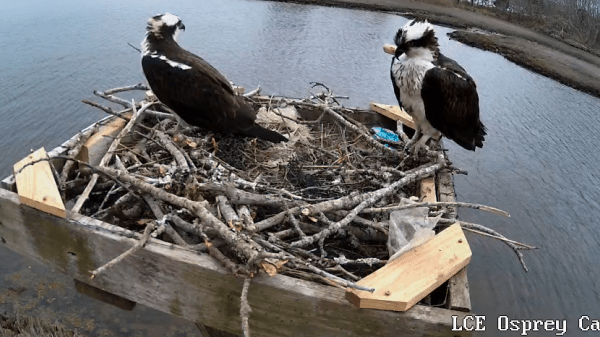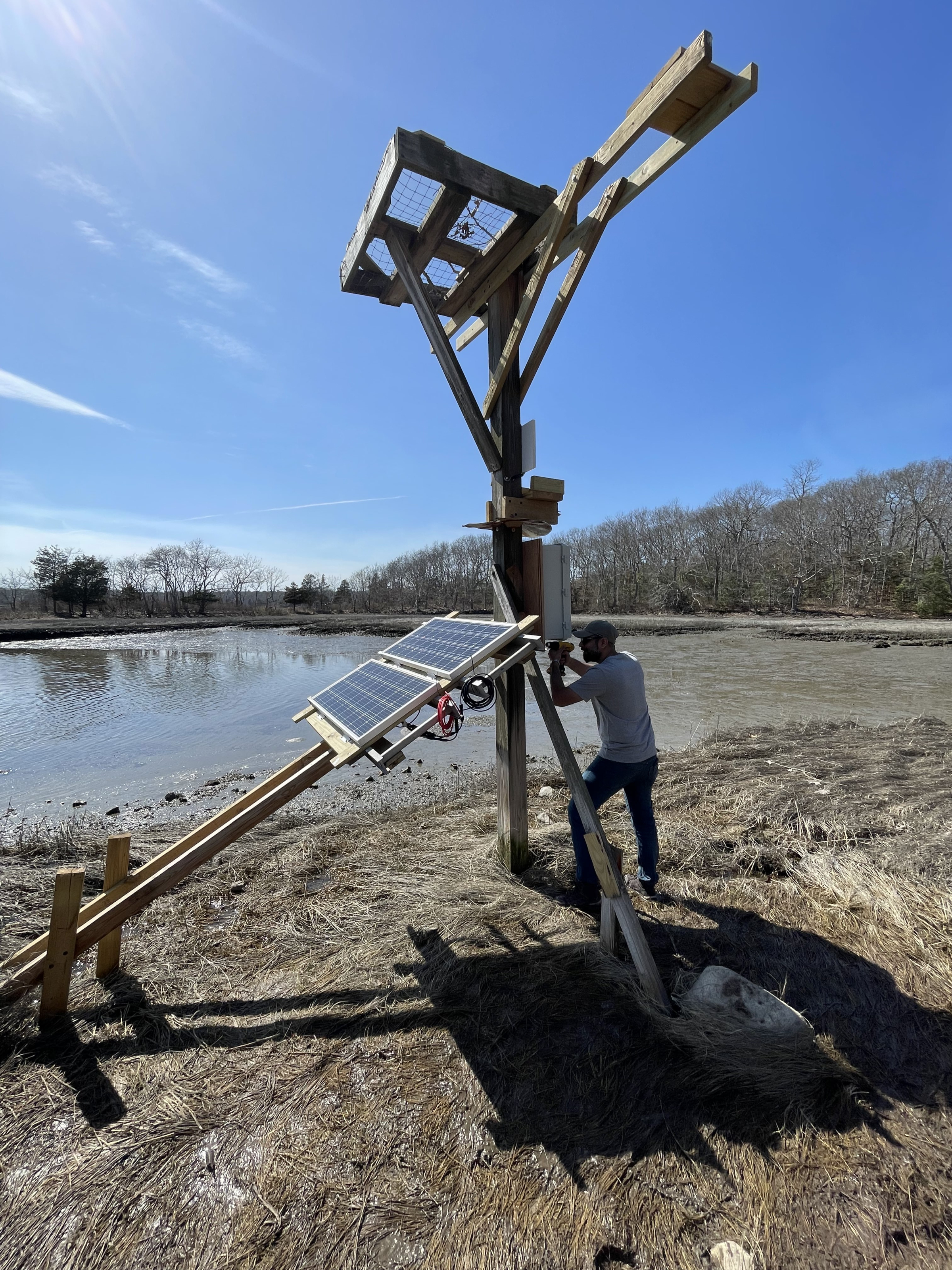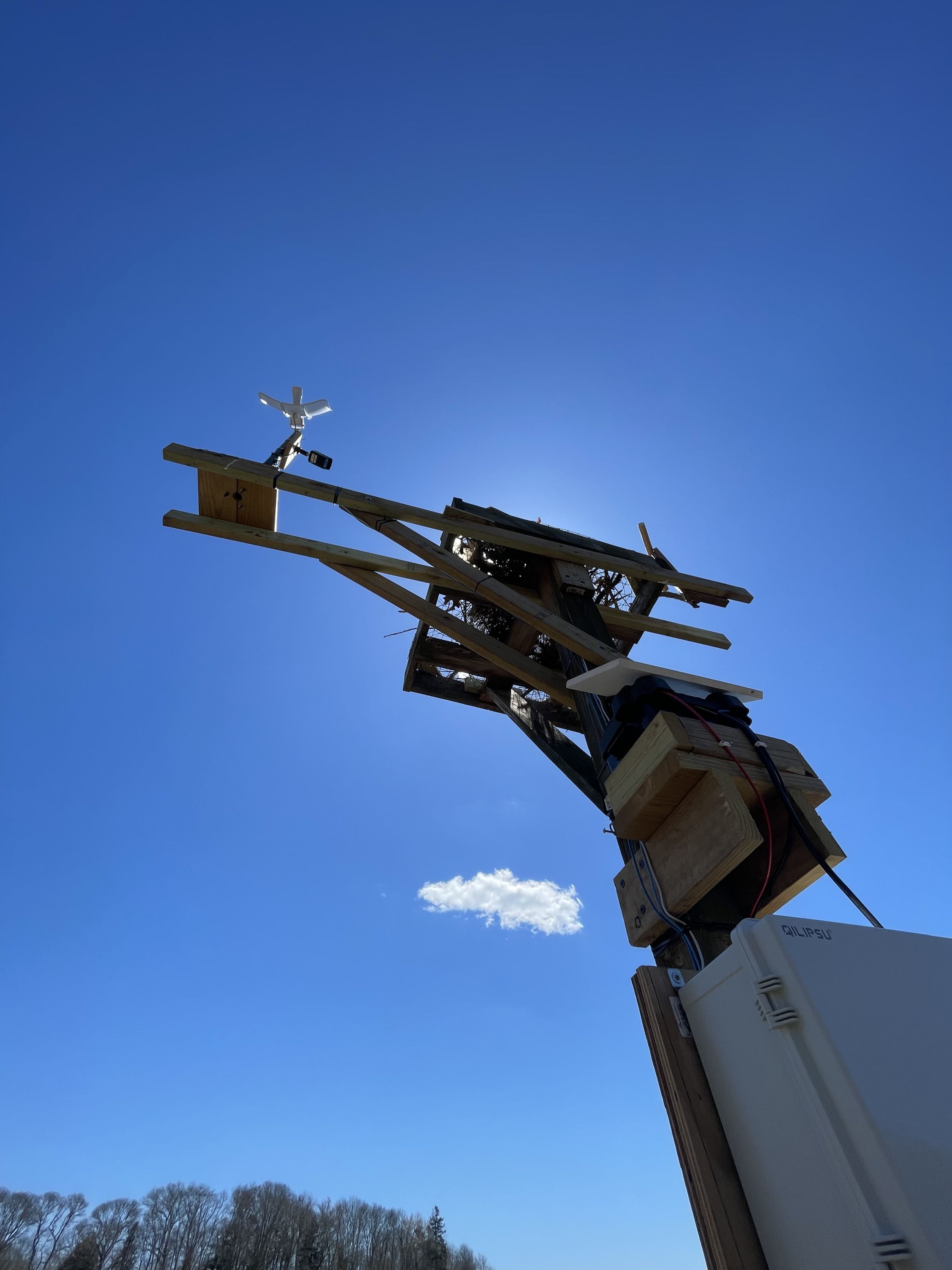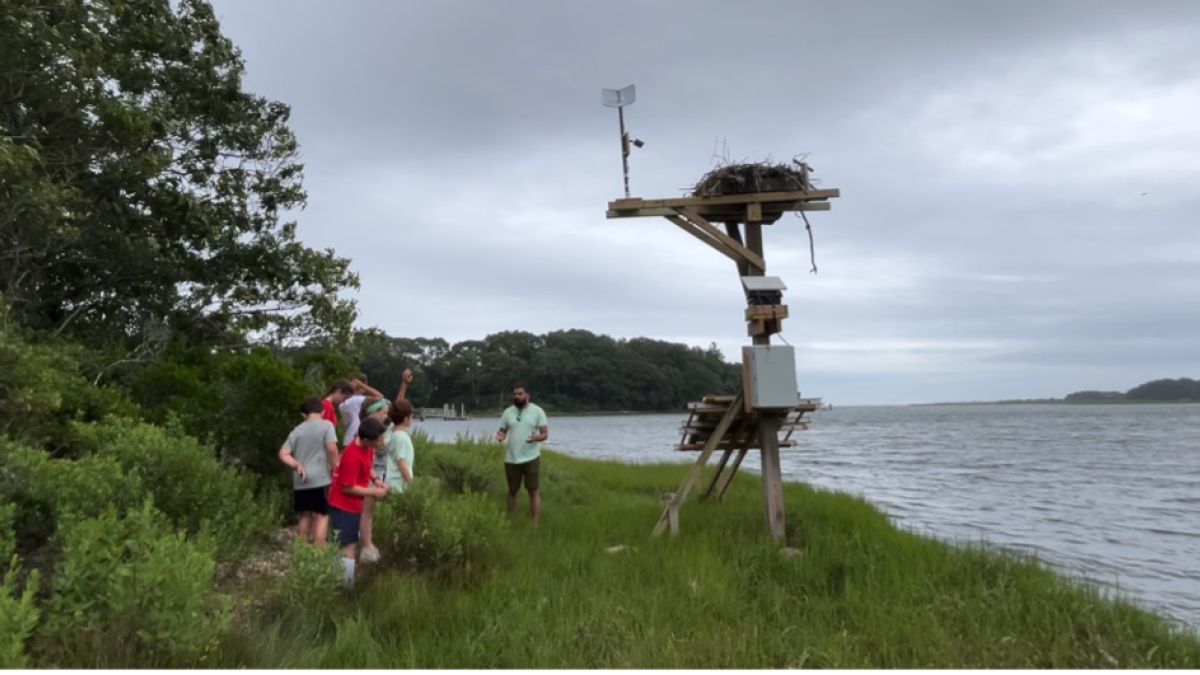A Community Action Project Made Possible by Community Partnerships: A Live-Feed Osprey Camera Installation

Each month, NAAEE shares narratives from the CEE-Change Fellows as they implement their community action projects and work to strengthen environmental education and civic engagement capabilities, all supporting the mission of cleaner air, land, and water. Join us on their journey! The Civics and Environmental Education (CEE) Change Fellowship is NAAEE’s newest initiative to support leadership and innovation in civics and environmental education in North America. This ee360+ program is a partnership between NAAEE, U.S. EPA, and the Cedar Tree Foundation.
When I started my fellowship at the Lloyd Center for the Environment (LCE) in 2020, I visited the estuary area and saw a pair of ospreys nesting there. Being a nature photographer, my eyes lit up, seeing them dive into the water periodically to hunt for fish. That was when I realized I was interested in learning more about them and possibly finding ways to include them in the LCE’s future education programs.
As Rachel Stronach, Executive Director of LCE, highlights,
The mission of the Lloyd Center is to instill life-long respect and affection for nature in all people through research and education; to advance a scientific and public understanding of our coastal ecosystems and the need to protect them; and to promote a legacy of natural diversity mainly in, but not restricted to, the coastal environments of southeastern New England.

A view of the Lloyd Center for the Environment’s estuary area. Photo credit: Hamza Malik
LCE has been conducting environmental education programs across the state of Massachusetts for almost 40 years now. Our research team brainstormed the idea of developing a live-feed camera setup for one of the osprey platforms to involve students, teachers and other community members in education-based programming as well as outreach perspectives. In 2023 I got a life-changing email that I was selected as one of NAAEE's Civics and Environmental Education (CEE) Change Fellows. The Fellowship program included a Community Action Project, and I was able to build my project around the LCE's osprey platform. Participating in this fellowship provided the opportunity to meet experts who have experience implementing similar projects. Dr. Stephen B. Witzig, faculty member at the University of Massachusetts Dartmouth Department of STEM Education and Teacher Development, explained our research team’s process in the following way:
Over the years, I have worked to find innovative ways for my research and teaching to intersect meaningfully with the Lloyd Center for the Environment work. One such collaboration has been through this Osprey Cam project—something that I had dreamed of years ago but took some time to align all the pieces—funding, technology, logistics, etc.—to bring this to fruition. The team on this project is just fantastic and fully dedicated to environmental education.
Even with all the support from LCE staff and NAAEE partners, once the project was approved and running, we started facing challenges and more obstacles.
Some challenges were:
• How would the osprey platform get the electricity source to power the equipment without damaging the protected land and marsh area of LCE?
• How would we update the existing osprey platform to hold the new equipment safely?
• Who would lead the renovation of the platform?
• Who would be our technology expert?
This is where the power of community coming together started to happen. I personally experienced that when a team of dedicated people comes together, they can make extraordinary things happen.

Osprey Platform at LCE without the camera & other equipment. Photo: Hamza Malik
The LCE Education Director Liz Moniz led the construction-related work for this project. Liz explained her working process by saying,
One of the many lessons I have learned in 25 years of being with the Lloyd Center is never to throw away today what you will no doubt need tomorrow, even if it is broken. We needed to make minor repairs and modifications to accommodate the new equipment. We were fortunate to utilize the remaining lumber from the construction of our new Living Building and repurpose an aluminum ladder to create a frame for the platform’s solar panels. Very satisfying.



Pictures showcasing construction/repair work at the LCE’s osprey platform. Photo credit: Hamza Malik
Our community partners from UMass Dartmouth, Dr. Stephen B. Witzig and Dr. Ramprasad Balasubramanian, also stepped up. They helped purchase the technology-related materials as well as brought in the expertise of their doctoral research assistant Ali D. Asif, who shared his experience of working on this project:
The main challenge of osprey's camera installation was to do it without digging any wires through the marshland. It is protected land, and any electric or internet wiring can affect the ecosystem. To operate a live-feed camera, we needed both electricity and internet. The solution was to run the camera on renewable energy and use wireless internet technology.



Osprey platform after going through the repairs, camera, and other equipment installation. Photo credit: Hamza Malik
We are currently in our pilot phase, and the project has already captivated our staff, visitors, students, and teachers. Several student groups have visited the osprey platform site to learn about our project. LCE educators have utilized this opportunity to teach students about coastal birds and how such technology-integrated systems can help us learn more about their life histories.

Student visit to the osprey platform site. Photo credit: Hamza Malik

A poster of a Student’s final project on ospreys utilizing photography as a tool. Photo credit: Hamza Malik

A group photo of the students' visit to the osprey Platform Site. Photo credit: Hamza Malik

A poster of a Student’s final project on ospreys utilizing photography as a tool. Photo credit: Hamza Malik
During our pilot phase, multiple pairs of ospreys visited our newly updated platform, and we hope to have an active nest next year. Below are some short video clips from our osprey camera. Be on the lookout for our feed coming to the Lloyd Center for the Environment YouTube channel in 2025!
The osprey camera installation sites show the potential for integrated E-STEM education opportunities. Projects like this one can be the foundation for creating curriculum material for teachers and students across grade levels. Teachers and students alike can learn about their local area's biodiversity, study ospreys' nesting behaviors in real time, and learn how to utilize STEM to better the environment.




